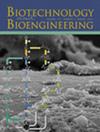Effectively Guiding Cell Elongation and Alignment by Constructing Micro/Nano Hierarchical Patterned Titania on Titanium Substrate
Abstract
Based on the innate sensitivity of cell to substrate topographical cues, modulating cell-directed growth behavior is crucial for promoting tissue repair and reconstruction. Although photolithography technology has been extensively employed to fabricate a variety of anisotropic patterned structures to guide cell growth, it remains a great challenge to design high-resolution micro/nano hierarchical structures directly onto medical titanium (Ti)-based implants. Herein, we present a rapid, reliable and reproducible approach combining photolithography and hydrothermal technology to construct a micro/nano hierarchical structure including anisotropic micro-strips and a porous structure composed of TiO2 nanotubes features. In vitro biological and physicochemical analyses revealed that the micro/nano hierarchical structures not only efficiently facilitate the localization and adsorption of BSA molecules, but also enhances the control of cell growth behavior. The synergistic effect between the physical limitation for organizing cellular cytoskeleton at micropattern and the control of focal adhesion sits at the nanoscale can effectively guide cells to maintain stable elongation and alignment, even at large micro-stripe width of 100 μm. This study presents a promising strategy to precisely construct micro/nano multi-level patterned structure on Ti substrate using biomaterials with excellent biocompatibility. These functional micro/nano hybrid micropatterns offer a powerful platform for regulating bioreagent localization and cell behaviors in various applications including tissue engineering, regenerative medicine, drug screening, and biosensors.


 求助内容:
求助内容: 应助结果提醒方式:
应助结果提醒方式:


